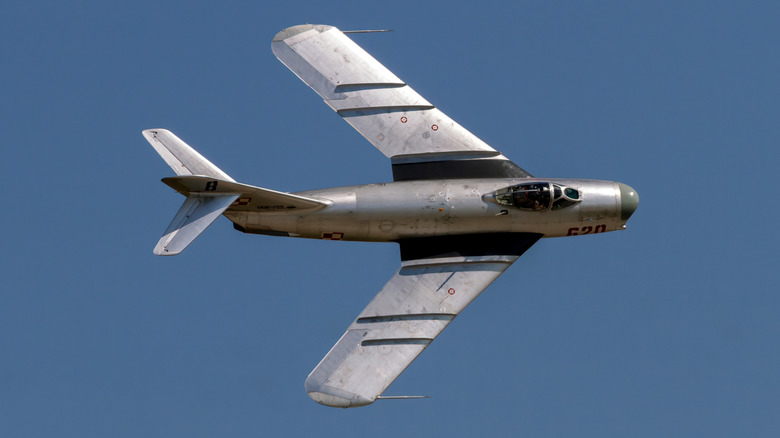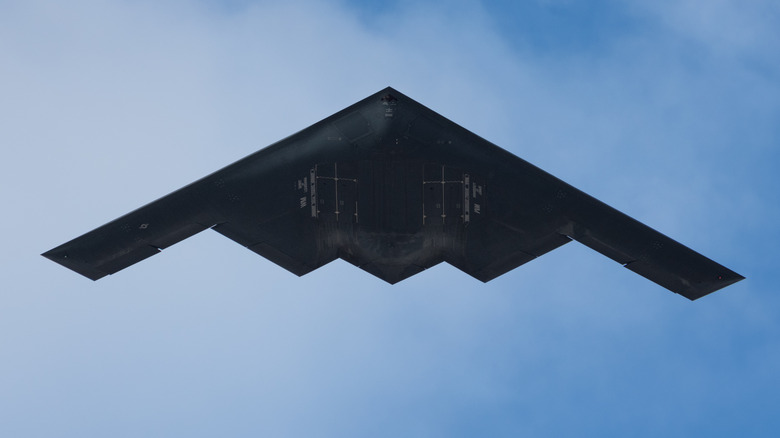Why Wing Fences Disappeared From Modern Military Aircraft Designs
If you've ever studied older military aircraft like the North American F-86 Sabre jet, you may have noticed that many of them had flat metal plates, known as wing fences, on the wings. While these plates may look like a stylistic choice, they were often added to jets with backward-angled wings, or swept wings, to overcome sideways airflow that increased drag. But why aren't they as common on military aircraft now?
Wing fences likely disappeared from modern military aircraft thanks to improved technology such as Leading Edge Extensions, or LEX. These extensions are built onto the front of the wings and help reduce drag, thus improving the jet's aerodynamics. There are many different types of LEX, including root extensions, which are specifically used on fighter jets. Root extensions not only address drag, they also help delay stall, by creating a vortex that keeps the wing steady and gives the jet an elevated attack angle.
The Fly-By-Wire system, or FBW, is another innovation that undoubtedly decreased the need for wing fences. FBW improved performance by giving pilots precise control over an aircraft's flight surfaces, allowing for better management of airflow and stability.
Advanced technology has improved military aircraft
Military aircraft have made a tremendous leap forward from what they were in the 1940s and 1950s. During those years, fighter jets lacked many of the systems that eventually became commonplace, like afterburners and even radar.
As technology advanced, fighter jets became faster and more powerful, capable of reaching supersonic speeds. Onboard weapons systems also saw major improvements, as machine guns were either replaced or supplemented by radar-guided missiles with greater accuracy and range. Stealth features were introduced in the early 1990s, allowing aircraft to hide their engines from enemy radar and heat-seeking missiles. These upgrades significantly boosted both survivability and combat effectiveness on modern battlefields.
In the future, military aircraft will continue to evolve with cutting-edge innovations, including drones designed for everything from real-time surveillance to direct combat missions. Artificial intelligence is already being used for data analysis and threat assessment, and it's expected to play an even larger role by enhancing the capabilities of battle-tested military drones.

